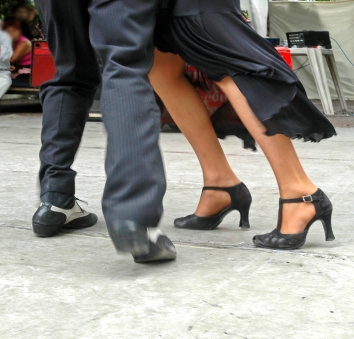High Heels Lead to Foot Pain

It's no secret that high heels are bad for the feet. But a new study documents the risks.
A study of 3,300 men and women found that nearly 64 percent of older women who reported hind-foot pain regularly wore high heels, pumps or sandals at some point in their lives.
The study found no connection between foot pain in men and the shoes they wore, largely because they don't typically wear high heels and spend less time in sandals, the researchers concluded.
"We found an increased risk of hind-foot pain among women who wore shoes, such as high heels or pumps, that lack support and sound structure," said study team member Alyssa B. Dufour, a graduate student at the Institute for Aging Research of Hebrew SeniorLife.
Ignoring the problem
Humans have been wearing shoes for about 40,000 years. In the past century or so, the consequences have become well-known.
Foot pain is one of the top 20 reasons people ages 65 to 74 visit a physician, the researchers say. About 30 percent of women report the problem, as do about 20 percent of men. Scientists have not known for sure what's behind the discrepancy, though other studies have hinted at reasons.
Sign up for the Live Science daily newsletter now
Get the world’s most fascinating discoveries delivered straight to your inbox.
People who don't wear shoes at all have wider feet and a bigger gap between the big toe and the next.
Women who spend a lot of time in high heels wind up with smaller calf muscles. And high heels are known to put excess pressure on the balls of the feet and squeeze the toes together. Over time, the foot can curve inward.
As often is the case, fashion trumps health. Increasingly women are getting cosmetic surgery to shave down the bones of their toes or are getting Botox injections to loosen the muscles pulling on the toe (cosmetic surgery sales have sagged during the recession, though).
Going minimal seems not to be the answer, either.
The new study lumped sandals in with high heels in the "poor footwear" category. And a separate study last year found that wearing flip-flops non-stop alters the way a person walks, leading to problems with the ankle, heel and sole.
Some, including the Society for Barefoot Living, claim that going without footwear is the answer. But that's not practical in much of modern society, critics point out.
Footwear choices
The new study puts shoes into the following categories:
- Poor: high heels, pumps, sandals and slippers.
- Average: hard- or rubber-soled shoes and work boots
- Good: athletic and casual sneakers.
"Young women should make careful choices regarding their shoe types in order to potentially avoid hind-foot pain later in life," Dufour said.
The findings are detailed in the October issue of the journal Arthritis Care & Research.
- 5 Myths About Women's Bodies
- Nip & Tuck: The Top 10 Crimes Against Nature
- Sidewalk Science: How Water Splashes Atop Your Shoes
In The Water Cooler, Imaginova's Editorial Director Robert Roy Britt looks at what people are talking about in the world of science and beyond. Find more in the archives and on Twitter.
Robert is an independent health and science journalist and writer based in Phoenix, Arizona. He is a former editor-in-chief of Live Science with over 20 years of experience as a reporter and editor. He has worked on websites such as Space.com and Tom's Guide, and is a contributor on Medium, covering how we age and how to optimize the mind and body through time. He has a journalism degree from Humboldt State University in California.










